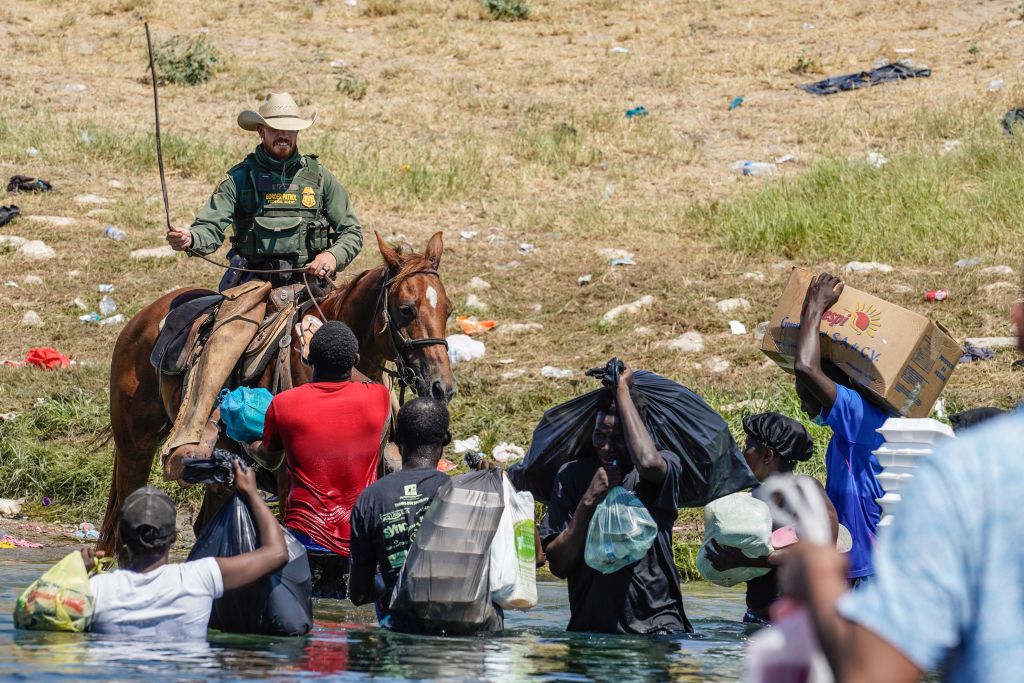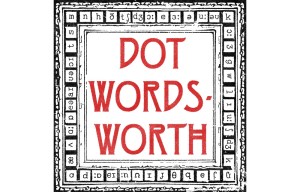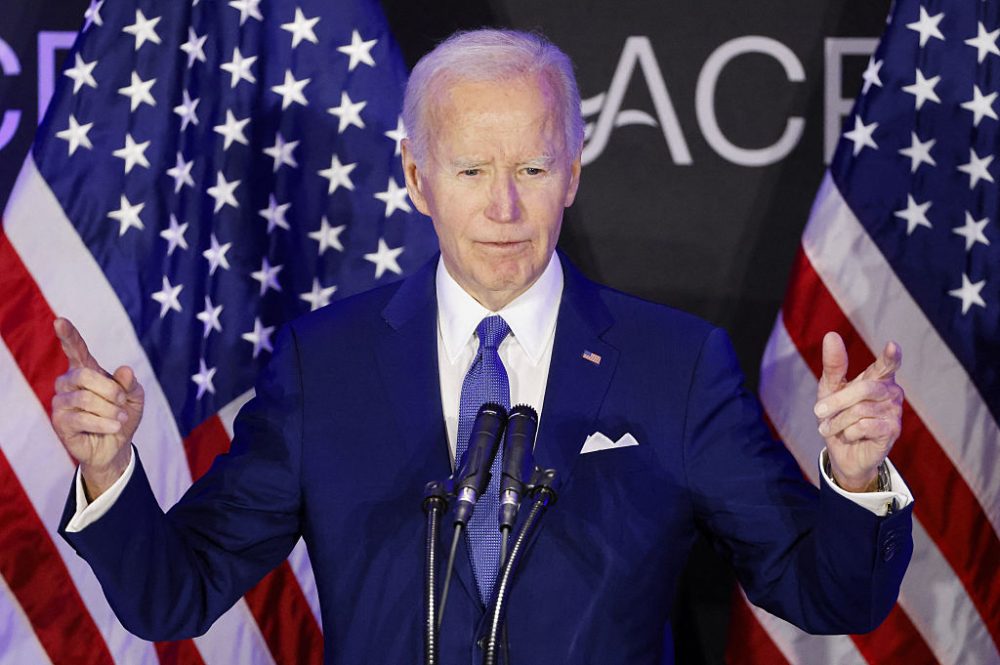‘It’s a little thing, but a big little thing.’ I’ve been using this not-exactly-eloquent phrase lately to describe a category of observation that could be written off as nitpicking, but which isn’t, really. If you notice enough big little things, you might just be able to explain how the world works.
One big little thing I’ve been thinking a lot about lately comes from ‘Another Crisis at the Border’, the September 27 edition of The Daily, the blockbuster New York Times podcast. The episode was hosted by Astead Herndon and was mostly a conversation between him and his fellow Times reporter Michael Shear. They discussed the growing crisis at the US/Mexico border, and the large group of mostly Haitian migrants fleeing political and natural disaster. The Biden administration has summarily deported thousands of them.
The crisis has come to be defined by a set of photos and video clips. Border Patrol agents on horseback try to detain or block the migrants, who are wading across the Rio Grande, from entering the country. Most viral One big little thing I’ve been thinking a lot about lately comes from ‘Another Crisis at the Border’, the September 27 edition of The Daily, the blockbuster New York Times podcast. The episode was hosted by Astead Herndon and was mostly a conversation between him and his fellow Times— and outrageous — has been a photo by the freelance photojournalist Paul Ratje that appears to show an agent using his reins to whip a migrant. That image brought to mind some of the most horrifically violent moments from American history; it quickly went viral.
‘The images have drawn outrage from some Democratic politicians, immigration activists and civil rights leaders, and prompted the Department of Homeland Security to order an investigation into the Border Patrol agents’ actions,’ reported the news site Poynter. President Joe Biden and Senator Chuck Schumer both explicitly referred to migrants being whipped. ‘What we witnessed was worse than what we witnessed in slavery,’ said Rep. Maxine Waters.
Except the whipping didn’t happen. From one angle, it looks like Ratje has caught a whipping in progress. But video from a different angle shows that this is an illusion: the reins swing up as the agent maneuvers his horse. ‘Nobody saw a Border Patrol agent whipping,’ Ratje confirmed to Poynter. ‘What we did see was a Border Patrol agent swinging the rein in, like, a circle.’ There is video of this, and of agents yelling insults at some of the migrants (which warrants an investigation), but there is neither whipping nor attempted whipping.
Despite this, Herndon told the millions of people who download The Daily that the agents had used their reins ‘in this kind of whip-like fashion’, and that ‘folks were upset by the racial dynamics, by the forced deportations, by the use of the reins as a whip.’ At no point did Herndon and Shear tell listeners that the rumor was false or misleading, or that there was no evidence to support it. There’s no excuse for this: Fox News had factchecked the claim on September 24, three days before The Daily’s episode was launched.
Interestingly, the episode made the point that, horses or no, immigration is a broader, more complicated policy failure. And to its credit, the conversation was informative about the bipartisan sources of those failures. The point is that American immigration policy is, as the British version of this publication might put it, an utter balls-up.
I can hear accusations of nitpicking: why focus on one bit of misinformation in the midst of an urgent crisis? Because it’s a big little thing, that’s why. It’s a big little thing if the best-resourced news-gathering operation in the world cannot get a basic fact right, particularly when it is as emotionally and politically charged a basic factual point as we are likely to find.
The wall between journalism and activism is badly corroded. Increasingly, journalists — particularly younger ones — see themselves as serving an ideological mission. I often think back to a late-2020 New York magazine article by Reeves Wiedeman about how this conflict has played out within the Times. During the paper’s internal brouhaha over a controversial op-ed piece the talented journalist and commentator Liz Bruenig uploaded a PDF of a John Rawls essay and argued to her colleagues in an online staff forum that it raised philosophically difficult questions about liberalism that require serious thought.
‘Philosophy schmosiphy,’ responded a researcher, whose avatar was the logo for the hamburger chain Jack in the Box. ‘We’re at a barricades moment in our history. You decide: which side are you on?’ Bruenig was subsequently poached by the Atlantic. I have no inside knowledge but I suspect there is a connection between this moment and her departure.
I can’t say for sure why The Daily botched the whip issue. I can say that ‘which side are you on?’ thinking is endemic in journalism right now, and it rears its head most perniciously when the ideological stakes are high. ‘Are we going to include that whipping thing because everyone says it’s true, or are we going to fact-check it?’
Who wants to be seen, in a business dominated by liberals, as the journalist who doesn’t take racism seriously, and ‘downplays’ the horror that everyone thinks they’ve seen? I’d offer a different version of Mr Jack in the Box’s Manichaean choice: are you an activist or a journalist? Which side are you on?
This article was originally published in The Spectator’s November 2021 World edition.

























